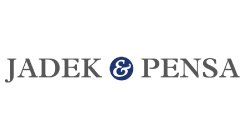Contributed by Jadek & Pensa.
1. Market Overview
Equity capital markets and debt capital markets are somewhat underdeveloped in Slovenia compared to its Western EU counterparts. The Ljubljana Stock Exchange, which celebrated 30 years of existence in 2019, is the main market for admission of equity, debt and other instruments. However, the liquidity of the market is on the weaker side, even though a new liquidity provider was added in 2019. In Slovenia SME’s typically resort to classic debt financing through banks and very rarely turn to capital markets to seek funding. Therefore, companies that participate in the Ljubljana Stock Exchange through admission of equity, debt or other instruments are predominantly older, larger companies.
In the last three years there has been only one major IPO on the Ljubljana stock exchange – the listing of the stock of Nova Ljubljanska Banka in 2018 in a total amount of EUR 1.03 billion and GDRs on the London Stock Exchange. In 2018 one of the mayor Slovenian companies, Gorenje, went private and delisted from the Ljubljana stock exchange after an acquisition of majority share by Hisense and subsequent squeeze-out of remaining shareholders. This follows the continuous pattern of delisting of companies from Ljubljana Stock Exchange in recent years.
The majority of transactions on the Ljubljana stock exchange in recent years involved shares (transactions with shares amounted to slightly more than EUR 300 million in 2019) followed by transactions with bonds (transactions with bonds amounted to slightly more than EUR 25 million). Some more notable transactions with shares in the last three years were M&A driven, such as the acquisition of large Slovenian logistics and freights provider Intereuropa or the privatisation of the second largest Slovenian bank Abanka, however the highest volume of transactions was performed with the shares of Slovenian pharmaceutical company Krka. Several bonds and commercial paper issues were made in 2019. Namely, in 2019 two bond issues with a total value of EUR 1.5 billion and 2 commercial paper issues with a total value of EUR 53.100 billion were made. The data was comparable in volume to the previous year (two new bond issues with a total issuing value of EUR 1.52 billion and 3 commercial papers in the total value of EUR 66.53 billion). In 2019 the total volume of the transactions remained at a similar level to that of 2018 (combined total of transactions amounted to approximately EUR 329 million), but the market cap of the index SBI TOP grew more than 15%.
2. Overview of the local stock exchange and listing segments (markets)
2.1. Regulated market
The Ljubljana Stock Exchange is the only stock exchange in the Republic of Slovenia. The equity market is divided into the Prime market and the Standard market. The Prime market is the elite part of the equity market, intended for companies that stand out for their liquidity, size, and transparency of operations. It is designed to increase the reputation of the best Slovenian companies in front of international investors. Companies that are listed on the Prime market have to fulfil additional reporting standards and their stocks usually have higher liquidity than those on other segments of the market. Both markets are regarded as “regulated markets” under the EU Directive on Markets in Financial Instruments (No. 2014/65/EC) (MiFID II) and the Slovenian Market in Financial Instruments Act (ZTFI-1).
Stocks that are listed on the Standard market fulfil the basic conditions for listing on the stock exchange, but are not yet mature enough for a more advanced trading segment. Companies whose stocks are listed on the Standard market meet the disclosure standards pursuant to Slovene legislation.
The Bonds market of the Ljubljana Stock Exchange is structured into Bonds and Money Market Instruments. Money Market Instruments are further subdivided into treasury bills and commercial papers. An additional market is the Structured Products Market, which is subdivided into Closed-end fund shares, Fund market, Certificates, Warrants, Rights and Other products. For listings on the Bonds market similar criteria as for the stock exchanges is applicable. Nevertheless, for open-end and close-end funds additional criteria applies regulating asset management companies.
2.2. Non-regulated market
The Ljubljana Stock Exchange also operates SI ENTER, a multilateral trading facility (MTF). The purpose of SI ENTER is to enable trading in securities that are not listed on the regulated market with the purpose of enhancing transparency and achieving a better price formation that at the OTC market. SI ENTER also serves the purpose of listing securities of start-ups and SMEs, who do not meet the requirements or lack sufficient funding to be listed on the regulated market (described above under point 2.a). SI ENTER market provides for less transparency compared to the regulated market (described above under point 2.a). The transparency requirements for the SI ENTER as MTF are regulated with the applicable legislation, i.e., EU Markets in Financial Instruments Regulation (No. 600/2014) (MiFIR) as well as the SI ENTER rules.
SI ENTER is subdivided into three segments: (i) the ADVANCE Segment, (ii) the BASIC Segment and (iii) the PROGRESS Segment. The main difference between the ADVANCE and PROGRESS Segments on one side and the BASIC Segment on the other side is that shares listed in the BASIC Segment are not listed upon the request of the issuer but as a consequence of the interest of traders. Accordingly, there are no additional reporting and disclosure obligations imposed on the issuers in the BASIC Segment, therefore transparency level is low and investing in BASIC Segment is associated with higher risk. The main difference between ADVANCE and PROGRESS Segments is that PROGRESS Segment requires additional reporting and disclosures and is associated with higher costs, therefore it is more appropriate for more mature issuers that are preparing to be listed at one of the “regulated markets” (described above under point 2.a). The three SI ENTER Segments are subdivided as follows:
- ADVANCE Segment, which includes:
- ADVANCE SHARES – greater transparency of operations compared to BASIC Segment, meant for shares, share-equivalent securities representing a share in membership rights of legal persons and GDRs related to shares or share equivalent securities, listed on the basis of the issuer application
- ADVANCE BONDS – meant for bonds, other types of securities containing monetary obligation of the issuer and GDRs related to these securities, listed on the basis of the issuer application
- ADVANCE COMMERCIAL PAPERS – meant for commercial papers, listed on the basis of the issuer application
- BASIC Segments. The purpose of the BASIC Segment is to allow traders to trade with shares for which trading interest among traders exist, to avoid OTC trading with such shares. As the shares are not listed on the basis of an application of the issuer, the issuer does not have any additional obligations or costs associated with the listing on the BASIC segment. The only sub-segment of the BASIC Segment is:
- SHARES SLOVENIA – lower transparency of operations, only issuers with registered office in Republic of Slovenia, listed on the basis of an invitation of the exchange.
- PROGRESS Segment, which is a segment shared between Ljubljana Stock Exchange and Zagreb Stock Exchange. In comparison to the ADVANCE Segment, which is a segment of Ljubljana Stock Exchange only, the PROGRESS segment requires additional reporting of companies and is associated with higher costs for the issuer (among other requirements, at the time of listing as well as for an additional two year period the issuer has to have a contract concluded with one of the advisors officially registered with the Progress MTF). In this sense the PROGRESS Segment is closer to the “regulated markets” (described above under point 2.a). PROGRESS Segment is therefore advisable to issuers who are preparing to be listed with the “regulated markets”. Currently there are no Slovenian companies listed with the PROGRESS Segment. The PROGRESS Segments is sub-divided to:
- PROGRESS SHARES – additional reporting and discloser requirements compared to ADVANCE Segment, meant for shares, share-equivalent securities representing a share in membership rights of legal persons and GDRs related to shares or share equivalent securities, listed on the basis of the issuer application
- PROGRESS BONDS – additional reporting and discloser requirements compared to ADVANCE Segment, meant for bonds, other types of securities containing monetary obligation of the issuer and GDRs related to these securities, listed on the basis of the issuer application
- PROGRESS COMMERCIAL PAPERS – additional reporting and discloser requirements compared to ADVANCE Segment, meant for commercial papers, listed on the basis of the issuer application
3. Key Listing Requirements
The listing process and listing requirements for listing equity and debt securities on Ljubljana Stock Exchange are regulated in the Stock Exchange Rules (in Slovene: "Pravila borze", published on: http://www.ljse.si/cgi-bin/jve.cgi?doc=678, the “LJSE Rules”).
3.1. ECM
As mentioned above, stocks can be listed and traded on Ljubljana Stock Exchange on two market sub-segments:
- Standard Market
- Prime Market
Listing requirements for Standard Market
For a company’s shares to be listed on the Standard Market the following requirements shall be fulfilled (Article 8 and 9 of the LJSE Rules):
- regarding the legal standing of the issuer:
- established and operating under the law of the country of its establishment;
- obtainment of LEI code;
- regarding publication of the prospectus and other information pursuant to the ZTFI-1:
- if publication of the prospectus is required; obtaining Securities Market Agency (ATVP) decision on the approval of the prospectus; the prospectus needs to be submitted to the Ljubljana Stock Exchange before listing;
- if publication of the prospectus is not required due to the application of the exceptions: notification to ATVP; such notification needs to be submitted to the Stock Exchange before listing;
- regarding transferability:
- the shares listed need to be freely transferable;
- regarding share issuance and trade settlement mechanism:
- the shares need to be validly issued and the requirements for reliable settlement of trades need to be fulfilled (this condition is fulfilled if the shares of the issuer established in Slovenia are issued as book-entry securities and entered in the central register).
The companies whose stocks are listed on the Ljubljana Stock Exchange need to fulfil the above stated requirements throughout the trading of their shares on the Ljubljana Stock Exchange. Furthermore, companies shall also comply with the LJSE Rules and other applicable regulation as well as decision adopted by the Ljubljana Stock Exchange and its management.
3.1.1. Listing requirements for Prime Market
For the stocks to be listed on the Prime Market all the listing requirements for listing on the Standard Market stated above need to be fulfilled as well as the following additional requirements (Article 11 of the Rules):
- share class:
- shares need to be issued as ordinary shares which give their holders one vote;
- quality criteria:
- operation of the company for at least three years before listing;
- audited annual reports for the past three years;
- minimum value of the capital shall be EUR 10 million or amount in other currency, which is equal;
- percentage of the shares held by the public: at least 25% (or less than 25%, provided that the Stock Exchange decides that the requirement is fulfilled if it assesses that due to the large number of shares of the same class and the volume of its sale to the public, the market will still function properly);
- disclosure requirements and publication of statements, whit which the issuer undertakes:
- to disclose information and report also in accordance with International Financial Reporting Standards (IFRS);
- to publish summaries of the public announcements both in Slovenian and English language;
- to publish interim business information (quarterly reports or interim statements), the financial calendar and the declarations of compliance with the Corporate Governance Code;
- to strive to the best of the abilities to meet the best practices of disclosure, as stipulated by the Guidelines, published by the management of the Stock Exchange-
3.2. DCM
Debt securities trading on the Ljubljana Stock Exchange are bonds and money market instruments, such as treasury bills, commercial papers and certificates of deposit in connection with the bonds (Article 6(3) of the LJSE Rules).
3.2.1. Bonds
According to Article 40 of the LJSE Rules, for listing the bonds on Ljubljana Stock Exchange, the same requirements needs to be fulfilled as for listing stock on the Standard Market. Furthermore, the issuer or the person requesting listing of the bonds on the Stock Exchange needs to comply with the obligation on the publication of the prospectus in accordance with ZTFI-1.
3.2.2. Money market instrument
Money market instrument (treasury bills and commercial papers) shall be listed on Ljubljana Stock Exchange provided that (Article 45 of the LJSE Rules):
- they are freely transferable;
- they are validly issued and the conditions for reliable settlement od trades are fulfilled;
- basic information regarding the money marker instrument is published; and
- administrative fee is paid.
3.3.3. Other
According to the Rules, special provisions and listing requirements may apply for listing the securities of the issuers having their seat in other EU Member States and third countries.
4. Prospectus Disclosure
4.1. Regulatory regimes
The prospectus is a key document that needs to be published when the securities are offered to the public or when the admission of securities on a regulated market situated or operating within a Member State is sought.
In Slovenia, matters concerning the preparation and content of the prospectus are primarily governed by the directly applicable Regulation (EU) 2017/1129 of 14 June 2017 (the “Prospectus Regulation”), the Commission Delegated Regulation (EU) 2019/980 of 14 March 2019 concerning the format, content, scrutiny and approval of the prospectus and the Commission Delegated Regulation (EU) 2019/979 of 14 March 2019 concerning regulatory technical standards on key financial information in the summary of a prospectus, the publication and classification of prospectuses, advertisements for securities, supplements to a prospectus, and the notification portal.
Since Prospectus Regulation repealed the previously valid Directive 2003/71 of 4 November 2003 on the prospectus to be published when securities are offered to the public or admitted to trading, majority of the matters concerning the prospectus are now uniformly regulated on the European level. Only minority of matters are therefore left to the individual Member States to regulate. In Slovenia, certain matters regarding the prospectus are thus still regulated in the ZTFI-1, however, no provisions apply to the content of the prospectus and disclosure requirements.
According to the Prospectus Regulation, prospectus shall be written and presented in an easily analysable, concise and comprehensible form so that enables the investors to make informed investment decisions. The information presented shall be sufficiently and objectively presented in a single document or separate documents. As a general rule, the prospectus shall therefore include essential information, which allow the investors to make an informed assessment of financial situation of the issuer or guarantor (the assets and liabilities, profits and losses, financial position, prospects), the rights attaching to the securities, reasons for the issuance as well as its impact on the issuer.
Article 16 of the Prospectus Regulation emphasizes the importance of disclosing the of risk factors to ensure that investors make an informed assessment of such risks and thus take investment decisions in full knowledge of the facts. The risk factors included in the prospectus shall be limited to risks which are specific to the issuer and/or to the securities and which are material for taking an informed investment decision. The prospectus also needs to include assessment of the materiality of the risk factors based on the probability of their occurrence and the expected magnitude of their negative impact. Risk factors shall be presented in a limited number of categories depending on their nature and shall be adequately described, explaining how they affect the issuer or the securities being offered or to be admitted to trading.
The Prospectus Regulation stipulates that the European Commission shall adopt delegated acts and further regulate the content of the prospectus. The Commission did so and issued Commission Delegated Regulation 2019/980, which in detail provides the information that need to be included in each type of the prospectus.
According to the Commission Delegated Regulation 2019/980, the prospectus shall therefore, inter alia, consist of:
- Information regarding the issuer, its organisational structure, management and supervisory bodies, remunerations and benefits policy, as well as persons responsible for information provided in the prospectus.
- Risk factor as provided in detail above.
- Business overview, including principal activities and markets, strategies and objectives, important events in the development of the issuer’s business, investments.
- Operating and financial review, including financial condition of the issuer and issuer’s likely future development.
- Trend overview in operational and financial field.
- Information about the employees and related shareholding and stock option plans.
- Major shareholders, including any potential differences in voting rights as well as information whether the issuer is directly or indirectly controlled and by whom.
- Related party transactions that the issuer has entered into during the period covered by the historical financial information and up to the date of the prospectus.
- Financial information about the issuer, including audited historical financial information covering the latest three financial years (or such shorter period as the issuer has been in operation) and the audit report in respect of each year prepared in accordance with the IFRS.
- Information about any (legal) proceedings (including any such proceedings which are pending or threatened of which the issuer is aware), during a period covering at least the year which may have, or have had in the recent past significant effects on the issuer and/or group’s financial position or profitability, or provide an appropriate negative statement.
Since a prospectus is a complex and extensive document, the prospects shall include a summary aiding the investors when considering whether to invest in a security or not. It shall be written in a way that is easy to read, using characters of readable size and written in a language and a style that facilitate the understanding of the information, in particular, in language that is clear, non-technical, concise and comprehensible for investors. A summary shall therefore include key information that investors need in order to understand the nature and the risks of the issuer, the guarantor and the securities that are being offered or admitted to trading on a regulated market. In accordance with Article 7 of the Prospectus Regulation, a summary should include the following four sections: (i) introduction, containing the prescribed warnings, (ii) key information on the issuer, (iii) key information on the securities as well as (iv) key information on the offer of securities and/or the admission to trading on a regulated market.
4.2. Local market practice
As evident above, there are fewer offerings of securities in the Slovenian market compared to other European markets. As ATVP stated in its yearly report for the year 2018, the trend in the issuance of new securities and the volumes of financing of businesses on the capital market is not encouraging neither in the equity nor in the debt sector. This is likely due to the fact that businesses in Slovenia usually seek funding sources within the banking sector and not on the capital markets. As the capital markets are not as developed in Slovenia as in certain other EU countries, there is no particular local market practice in relation to drafting and content of the prospectus.
4.3. Language of the prospectus for local and international offerings
According to Article 27 of the Prospectus Regulation, the language of the prospectus depends on the territory where the securities are offered to the public or where the admission on a regulated marker is sought. Provided that the securities are offered to the public or admission to trading on a regulated market is sought:
only in Slovenia as a home Member State, then the prospectus shall be prepared in Slovenian language only (Article 27(1) of the Prospectus Regulation).
in home Member State, namely Slovenia, and in other host Member States, then the prospectus shall be prepared in Slovenian language, however, it shall also be available in the language accepted by the competent authorities of the each host Member State or in the language which is customary in the sphere of international finance, at the choice of the issuer, the offeror, or the person asking for admission to trading on a regulated market (Article 27(3) of the Prospectus Regulation).
in other Member states (rather than the host Member State), than the prospectus shall be prepared either in a language accepted by the competent authorities of those Member States or in a language customary in the sphere of international finance, at the choice of the issuer, the offeror or the person asking for admission to trading on a regulated market.
Nevertheless, according to paragraph 2 of the Article 27(2) of the Prospectus Regulation, the competent authority of each host Member State shall require that the prospectus summary referred to in Article 7 be available in its official language, or at least one of its official languages, or in another language accepted by the competent authority of that Member State, but it shall not require the translation of any other part of the prospectus.
In case where non-equity securities are offered to the public or admission to trading of non-equity securities on a regulated market is sought one or more Member States, the prospectus shall be drawn up either in a language accepted by the competent authorities of the home and host Member States or in a language customary in the sphere of international finance, at the choice of the issuer, the offeror or the person asking for admission to trading on a regulated market. Such obligations apply only if such non-equity securities are to be traded only on a regulated market, or a specific segment thereof, to which only qualified investors can have access for the purposes of trading such securities or such securities have a denomination per unit of at least EUR 100,000 (Article 27(5) of the Prospectus Regulation).
5. Prospectus Approval Process
5.1. Competent Regulator
In Slovenia, ATVP is competent for all the matters related to the publication of the prospectus and is responsible for monitoring compliance with the provisions on prospectus.
5.2. Timeline, number of draft submissions, review and approval process
The prospectus approval process is regulated in the Prospectus Regulation, Commission Delegated Regulations as well as in ZTFI-1. Furthermore, ATVP has adopted Guidelines on the prospectus review and approval process (Smernice o postopku pregleda in potrditve prospekta, or the “Guidelines”) which further regulate the prospectus review and approval process according to the Commission Delegated Regulation 2019/980.
The request for the approval of the prospectus for the offering of the securities to the public shall be submitted by the issuer or the offeror. In case the approval of the prospectus relates to the admission of securities to trading on a regulated it shall be submitted by the offeror or other person asking for admission to trading on a regulated market.
The request for the approval of the prospectus shall include the draft prospectus, confirmation on the payment of the administrative fee, a list of cross-references as well as all information required under point 2 of the Article 42 of the Commission Delegated Regulation 2019/980. In the event that the request for approval relates to the approval of the prospectus for the first offering of the securities, then such a request shall also include the resolution of the complement authority of the issuer regarding its issuance. The request together with the required attachments shall be submitted to ATVP in electronic form via email to This email address is being protected from spambots. You need JavaScript enabled to view it..
Once the request with the above-mentioned attachments is submitted, ATVP shall inform the issuer, offeror other person asking for admission about the receipt of the documentation no later than the end of the second business day following the receipt of the request.
If during the review process ATVP finds that the draft prospectus does not meet the standards of completeness, comprehensibility and consistency from the Prospectus Regulation, ZTFI-1 and Commission Delegated Regulation 2019/980 it shall inform the person submitting the request about the deficiencies within 10 days and shall clearly specify the changes or supplementary information that need to be supplemented. ATVP emphasized in its Guidelines that it usually issues one or two such resolutions on remedying the deficiencies during each prospectus review process.
Final version of the prospectus shall be submitted to ATVP electronically and shall be signed by the authorized persons of the offeror or, if necessary, by other responsible persons (i.e. guarantors). The form of the final version of the prospectus is prescribed by the Article 44 of the Commission Delegated Regulation 2019/980.
ATVP shall reject the request if the request was not submitted by eligible person or the prospectus is not compliant with the relevant legislative provisions or if the prospectus was not amended in accordance with ATVP’s resolution within a set deadline.
Once the prospectus includes all the requested information and once all the vague and conflicting information in the prospectus have been amended or corrected accordingly, ATVP shall approve the prospectus and issue its decision. ATVP will approve the prospectus provided that the request was submitted by the eligible person (issuer, offeror other person asking for admission to trading on a regulated market as it may be) and if the prospectus is compliant with all the requirements from the Prospectus Regulation, applicable provision of ZTFI-1 and Commission Delegated Regulation 2019/980.
ATVP informs the issuer, the offeror or the person asking for admission about its decision in writing by email as well as by post. ATVP shall issue a decision approving the prospectus:
- within 10 business days from the receipt of the request; however, the deadline shall only be applicable for the initial submission of the draft prospectus and not for subsequent amendments of the draft prospectus;
- within 20 business days in case of an initial public offering, namely where the offer to the public involves securities issued by an issuer that does not have any securities admitted to trading on a regulated market and that has not previously offered securities to the public;
- within 5 business days from receipt of the request in the case of a prospectus consisting of separate documents produced by frequent issuers.
Provided that the decision is not issued within the prescribed deadline, such a failure shall not be deemed to constitute approval of the prospectus.
6. Listing Process
6.1. Timeline, process with the stock exchange
If issuer fulfils the conditions and criteria for listing on the Standard Market or for listing on the Prime Market, it may request that its shares are listed on the Ljubljana Stock Exchange. The process is governed by the LJSE Rules.
Under LJSE Rules, the application for listing stocks consists of a signed and completed application form and the Listing Agreement. The application and all other documentation should be in Slovenian or English. Alternatively, the documents may be filed in a different language, together with certified translation into Slovenian or English. The deadline for the decision of the Stock Exchange regarding the listing is set to 30 days after the Stock Exchange received the application to be listed. However, the Stock Exchange may request additional information within 8 days after the receipt of the application. In such case the deadline for the decision of the Stock Exchange shall be prolonged.
In case all the conditions and criteria are fulfilled, the Stock Exchange signs the Listing Agreement and issues the decision on listing of the stocks. Before the trading with the listed stocks may be initiated the applicant has to publish any potential supplement to the prospectus and pay the requested listing fee. If such obligations are fulfilled before Ljubljana Stock Exchange issues the decision on the listing, the date the trading is initiated is stated in the decision on the listing. However, if the applicant fails to timely fulfil its obligations and trading is not initiated within three months after the listing of the stocks, Ljubljana Stock Exchange may remove the stocks from trading. In such case, both the Listing Agreement and the Stock Exchange’s decision on listing cease to be valid.
In case of bonds, the same procedure as described for the procedure of listing of stocks applies, insofar as the conditions and criteria for listing is fulfilled, the applicant fulfils its obligations relating to publishing of the prospectus and other information and completes all requirements prior to initiation of the trading.
7. Corporate Governance
7.1. Corporate governance code / rules (INED, board and supervisory composition, committees)
The primary source of (binding) corporate governance rules in Slovenia is the Companies Act (ZGD-1). ZGD-1 applies to all companies (public and private corporations, LLCs, sole proprietors etc.). In accordance with ZGD-1, corporations may opt either for a two-tier or one-tier management system.
If a corporation opts for a two-tier management system, it shall be managed by the management board (consisting of one or more managers) and the management board shall be supervised by the supervisory board (consisting of at least three members). The management board shall be appointed by the supervisory board and shall direct the business operations of the company, represent the company, and act on the company’s behalf. It shall report to the supervisory board. The supervisory board shall be appointed by the general meeting of the company and shall supervise the conducting of the company’s business. The supervisory board may appoint one or more committees (e.g. audit committee, appointment committee, remunerations committee). A committee shall be composed of a chair and at least two members (the chair shall be appointed from among the members of the supervisory board). Committees shall report on their work to the supervisory board.
If a corporation opts for a one-tier system, it shall be managed by a unified board of directors (consisting of at least three members), appointed by the general meeting of the company. The unified board of directors shall manage a company and supervise its operations. In public companies, the unified board of directors shall appoint at least one executive director from among its members; however, no more than one half of the members of the unified board of directors may be appointed executive directors. Executive directors shall represent and act on behalf of the company unless otherwise provided in the articles of association. The unified board of directors may also delegate certain tasks to the executive directors, including the management of current operations and administration of the books of account. The unified board of directors may appoint one or more committees; in public companies, the appointment of an audit committee is mandatory.
Besides ZGD-1, public companies also observe a legally non-binding Management Code for Publicly Traded Companies (Kodeks upravljanja javnih delniskih druzb, or “Management Code”), adopted by the Ljubljana Stock Exchange and Slovenian Directors’ Association on 27 October 2016. The Management Code sets forth recommendations for managing of the companies on the basis of the “comply or explain” principle. The Management Code prescribes rules on, inter alia, the adoption of a management policy, corporate governance statement, and statement on the compliance with the Management Code; relationship between the company and its shareholders; supervisory board, management board, and board of directors (including on the independence of their members); audit and internal control system; and transparency of business operations.
7.2. Any other ESG considerations
ZGD-1 prescribes that, when necessary, the companies shall include in their yearly business report markers, indicators and other factors that include information concerning environmental protection and employees. In addition, all public companies are obliged to include in their annual report a description of the diversity policy implemented in relation to representation in the management and supervisory bodies of the company (having regard to gender and other aspects, such as age, education and professional experience, and including an indication of the objectives, modalities and results of the diversity policy during the reporting period).
Additionally, the (non-binding) Management Code provides that all public companies shall develop and adopt a diversity policy and disclose a sustainability report, part of which shall be a corporate social responsibility report (touching upon responsibilities of the company to employees, consumers, local community, and environment), and that the remuneration of their management bodies shall promote sustainable development of the company and include non-financial criteria, important to create the long-term value of the company (such as compliance with applicable company rules and ethical standards).
8. Documentation and Other Process Matters
8.1. Over-allotment (greenshoe or brownshoe structure)
In the EU, over-allotment (and greenshoe structure specifically) is regulated in the Commission Delegated Regulation (EU) 2016/1052 supplementing Regulation (EU) No 596/2014 of the European Parliament and of the Council with regard to regulatory technical standards for the conditions applicable to buy-back programmes and stabilisation measures (the “Delegated Regulation”). Overallotment shall only be used under the conditions set forth in Article 8 of the Delegated Regulation. These conditions are:
1) securities shall be overallotted only during the subscription period and at the offer price;
2) a position resulting from the exercise of an overallotment facility by an investment firm or credit institution which is not covered by the greenshoe option shall not exceed 5 % of the original offer;
3) the greenshoe option shall be exercised by the beneficiaries of such an option only where the securities have been overallotted;
4) the greenshoe option shall not amount to more than 15 % of the original offer;
5) the period during which the greenshoe option may be exercised shall be the same as the stabilisation period;
6) the exercise of the greenshoe option shall be disclosed to the public promptly, together with all appropriate details, including in particular the date of exercise of the option and the number and nature of securities involved.
Pursuant to the Delegated Regulation, before the start of the initial or secondary offer of the securities, the entity undertaking the stabilisation (as well as the persons acting on their behalf) shall ensure adequate public disclosure of:
1) the existence of any overallotment facility or greenshoe option and the maximum number of securities covered by that facility or option;
2) the period during which the greenshoe option may be exercised; and
3) any conditions for the use of the overallotment facility or exercise of the greenshoe option.
There are no provisions in Slovenian national legislation supplementing the EU legislation on over-allotment. Therefore, (only) EU legislation shall be observed with regard to this topic.
In the absence of rules on brownshoe (“reverse greenshoe”) structure, the general rules on over-allotment and rules applicable to greenshoe structure shall apply mutatis mutandis. Note that brownshoe structure is used far less commonly than greenshoe structure.
8.2. Stock lending agreement
Stock lending agreements, in the context of market stabilisation measures, are agreements allowing underwriters to borrow shares from the issuer and use such shares to settle with investors that are given overallotted shares.
Stock lending agreements may trigger certain obligations under Slovenian Takeovers Act (ZPre-1) and ZTFI-1 to the extent that voting rights are transferred under the lending agreement. Furthermore, tax implications may also arise under stock lending agreements, however this is depending on the structure of the transactions, amount of transferred rights and the status of the borrower and the lender.
8.3. Stabilisation
Pursuant to the definition set forth in the Regulation (EU) No 596/2014 (the “Market Abuse Regulation,” or MAR), stabilisation means a purchase or offer to purchase securities, or a transaction in associated instruments equivalent thereto, which is undertaken by a credit institution or an investment firm in the context of a significant distribution of such securities, exclusively for supporting the market price of those securities for a predetermined period of time (due to a selling pressure in such securities).
Generally, trading in securities or associated instruments for the stabilisation of securities shall be governed by the MAR. However, such trading is exempted from the prohibition of insider dealing and of unlawful disclosure of inside information and prohibition of market manipulation (set forth in Articles 14 and 15 of the MAR) if the following conditions are met:
1) stabilisation is carried out for a limited period;
2) relevant information about the stabilisation is disclosed and notified to the competent authority of the trading venue in accordance with the MAR;
3) adequate limits with regard to price are complied with; and
4) such trading complies with the conditions for stabilisation laid down in the regulatory technical standards referred to in the MAR.
As for the Slovenian national legislation, a provision relevant for stabilisation can be found in Article 141(5) of the ZTFI-1, which provides that a shareholder shall be exempt from the obligation to notify of the acquisition or disposal of major holdings when voting rights in shares are acquired to stabilize financial instruments in accordance with the MAR (unless voting rights in those shares are exercised or otherwise used to interfere with the management of a public company).
Other than that, there are no provisions in Slovenian national legislation materially supplementing the EU legislation on stabilisation.
9. Ongoing Reporting Obligations (Life as a Public Company)
9.1. Annual and interim financials
Pursuant to ZGD-1 and ZTFI-1, public companies shall report on their financials annually and semi-annually.
They shall prepare their annual report (and consolidated annual report, if applicable) within three months of the end of each financial year. The annual report shall consist of financial report (i.e., financial statements and notes to financial statements) and business report. The annual report shall be examined by an auditor (according to the method and under the conditions specified by the legislation governing auditing), who shall audit the financial report and examine the business report to the extent necessary in order to verify whether its content accords with other components of the annual report. The annual report (along with the auditor’s report) shall be published within four months after the end of each financial year.
Additionally, public companies shall also prepare an interim (semi-annual) report for the first six months of each financial year and publish it as soon as practicable and no later than three months after the end of such six-month period. The semi-annual report shall consist of a summary of the financial report and an interim business report. If the semi-annual report was audited, the auditor’s report shall be published as well. Furthermore, public companies holding listed shares in the Ljubljana Stock Exchange’s Prime market shall also prepare and publish quarterly reports.
Public companies shall ensure that both annual and semi-annual reports are publicly available for at least 10 years after their publication.
Finally, the legally non-binding Management Code also prescribes certain rules on reporting, e.g., that public companies shall include in their business report a governance statement and statement on the conformity with the Management Code (also see our answer to question 7.b. above on ESG considerations in reporting).
9.2. Ad hoc disclosures
Public companies are required to disclose information (on an ad hoc basis) that are considered controlled information pursuant to ZTFI-1 and the MAR.
In addition to the annual and semi-annual reports, controlled information is especially information on (i) any changes to major holdings notified to the public company by the shareholder or other entity; (ii) change in the share of the own (treasury) shares held by the public company; (iii) change in the total number of voting shares; (iv) change in the content of the rights arising from securities; and (v) inside information (as defined in the MAR). Public companies shall also publish the information on its general meetings and certain other information.
The controlled information should be disclosed by the issuer as soon as possible and at the latest within the time limits prescribed for each type of controlled information by ZTFI-1 and theMAR, in a manner that ensures rapid access to that information on a non-discriminatory basis. The disclosure of controlled information must contain all information that enables investors to assess the position of the public company and to assess the impact of the controlled information on the price of the issuing financial instrument. When a public company or other person who has requested the listing of securities on a regulated market without the consent of the public company discloses controlled information, it shall at the same time submit the contents of that disclosure to ATVP. It should be noted that, under certain conditions set forth in the MAR, the issuer may (on its own responsibility) delay disclosure to the public of inside information. The issuer should also inform the competent authority, i.e., ATVP, on the delayed disclosure of inside information in accordance with Article 17 of the MAR.
Finally, ad hoc disclosures are also regulated in applicable legally non-binding documents. The Management Code prescribes that public companies shall ensure timely and accurate public disclosure of all controlled and other relevant business information. Such information includes e.g. information about the company, financial position, business, ownership, management of the company and future expectations, as well as other information that has an impact on the position of investors). Furthermore, Ljubljana Stock Exchange has issued Recommendations on Reporting of Public Companies (Priporocila javnim druzbam za obvescanje, or the “Recommendations”). The purpose of the Recommendations is to define the disclosure standards of public companies holding listed shares in the Ljubljana Stock Exchange’s Prime market and they are intended to set forth good practices with regard to disclosure of inside information and other types of controlled information. Note that, despite the general non-binding nature of the Recommendations, some of the provisions of the Recommendations are nevertheless binding for public companies holding listed shares in the Ljubljana Stock Exchange’s Prime market (e.g., mandatory quarterly reporting, reporting in English, statement on the compliance with the Management Code).



























